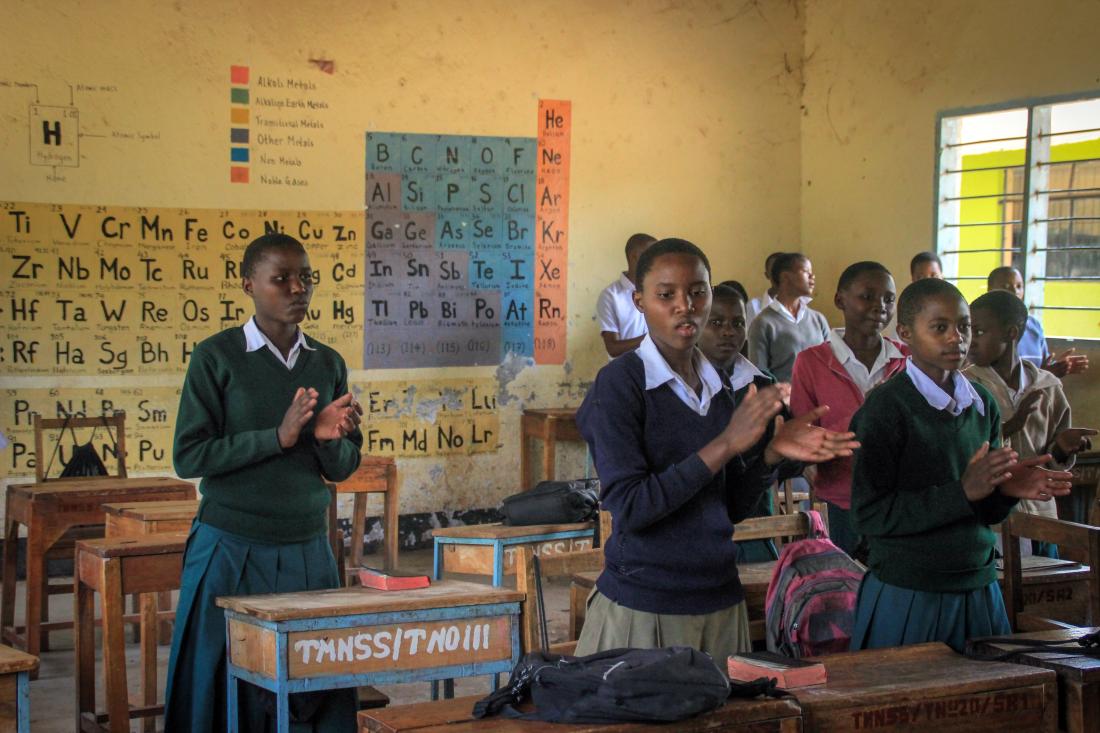The Impact of Secondary School Exam Preparatory Courses on Student Education and Labor in Tanzania Among Out-of-School Youth
- Students
- Women and girls
- Youth
- Dropout and graduation
- Earnings and income
- Employment
- Enrollment and attendance
- Age of marriage
- Age of childbearing
- Training
- Subsidies
- Scholarships
In many countries, national exit exams can allow youth who are not in school to achieve secondary school equivalency, potentially impacting their ultimate educational attainment and labor market outcomes. Researchers are conducting a randomized evaluation to test the impact of offering stipends for exit exam preparatory courses on students’ exam completion and subsequent education, labor market, and marital outcomes.
Problema de política pública
The option to obtain secondary school equivalency by passing a national exit exam is a common policy in many low- and middle-income countries and preparatory courses for these exams are frequently utilized. However, the cost of these courses may present a significant barrier to enrollment, especially for girls and low-income youth. In addition, evidence of the effectiveness of secondary school equivalencies in improving labor market outcomes is limited. Can scholarships to preparatory courses for secondary school equivalency exams, provided to low-income and out-of-school young adults, change long-term education, labor market, and marital outcomes? How do these outcomes differ for girls?
Contexto de la evaluación
Prior to the Covid-19 pandemic, 30 percent of Tanzanian students completed lower secondary school on time, and this figure is likely to be lower post-pandemic. However, like many other countries, Tanzania allows out-of-school young people to earn a secondary school equivalency by passing an exit exam called the Certificate of Secondary Education Examination (CSEE). Exam passage is required for secondary school passage, among active students and non-students alike. Students who graduate secondary school are generally offered this exam automatically, while students who did not graduate must qualify to take the CSEE by passing another exam, the Qualifying Test (QT).
There is a private market that prepares individuals for this exam through preparatory courses. These courses are two years long, with the second year being conditional on passing the QT exam in the first year. However, the fees charged by these alternative education centers may reduce demand for their services. As Covid-19 has reduced access to education and income1, more out-of-school youth may want to use these centers post-pandemic, but the ability to pay may simultaneously be lower.
In 2016, BRAC, an international NGO focused on worldwide poverty alleviation, began piloting a free version of CSEE preparatory courses for low-income girls, which preliminary findings indicate may be effective at improving pass rates. However, offering scholarships to existing programs may be more cost-effective than managing an entirely new one.

Detalles de la intervención
Researchers are conducting a randomized evaluation to test the impact of offering stipends for exit exam preparatory courses on students’ exam completion and subsequent education, labor market, and marital outcomes.
First, researchers collaborated with BRAC and the Tanzanian Institute for Adult Education to identify nine local alternative education centers that had a strong track record of students passing the QT and CSEE. Then, in the Tanga and Korogwe districts of Tanzania, where BRAC already had an established presence, researchers implemented a publicity campaign to alert people to possible scholarships for these programs. Those who were low-income, out-of-school, and not already enrolled in CSEE preparatory centers were eligible for the scholarship.
This recruitment process resulted in the selection of 930 eligible applicants, who were randomly divided into two groups:
- Scholarships group: In this group, 442 individuals were offered full scholarships to the two-year preparatory program. Seventy percent of offers went to women applicants, as researchers were particularly interested in the effects of scholarships on women. Of 442 offers, 206 applicants accepted the offer and received scholarships. BRAC staff monitored the progress of these individuals monthly and tuition was paid conditional on the center meeting agreed-upon standards and the student continuing to be enrolled and engaged.
- Comparison group: In this group, 488 individuals were assigned to the comparison group and did not receive scholarships. Researchers will conduct phone surveys approximately every six to nine months, as well as an endline survey after course completion, to measure students’ completion of the CSEE, engagement with higher education, literacy and numeracy performance, labor market outcomes, psychosocial well-being, and marital and familial outcomes.
Researchers will conduct phone surveys approximately every six to nine months, as well as an endline survey after course completion, to measure students’ completion of the CSEE, engagement with higher education, literacy and numeracy performance, labor market outcomes, psychosocial well-being, and marital and familial outcomes.
Resultados y lecciones de la política pública
Research ongoing; results forthcoming.

